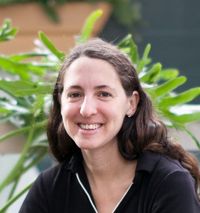Pick up the Pace: A Small Change Could Bring Big Health Benefits
Older adults may avoid a certain kind of age-related decline by picking up the pace.


You may have heard the expression old and frail. It conveys a clear picture of a particular type of older person who tends to be weak, thin, and easily injured.
Frailty does not have to be synonymous with aging, although a significant number of people do develop this condition as they advance in years. In fact, between 12% to 24% of older adults worldwide experience health issues related to frailty, which put them at greater risk of fatigue, muscle weakness, falls, incontinence, depression, and unexplained weight loss. Unfortunately, some factors, such as genetics, can make you more susceptible to frailty and are out of your control.
However, the good news is, recent research shows there is one very simple thing that you can do as you get older to significantly reduce your risk. You just need to pick up your pace. But there's more to it than just walking faster; it helps to add a bit of structure and tools.
From just $107.88 $24.99 for Kiplinger Personal Finance
Become a smarter, better informed investor. Subscribe from just $107.88 $24.99, plus get up to 4 Special Issues

Sign up for Kiplinger’s Free Newsletters
Profit and prosper with the best of expert advice on investing, taxes, retirement, personal finance and more - straight to your e-mail.
Profit and prosper with the best of expert advice - straight to your e-mail.
Walking this much faster can help avoid frailty
According to research published in PLOS One, walking just slightly faster than your comfortable walking cadence could significantly decrease the chance of frailty.
Walking cadence refers to the number of steps that you take per minute. To determine its impact, researchers studied older adults who were classified as either frail or prefrail. These adults were asked to take part in structured walking programs with a device to measure cadence fitted to their thighs.
Study participants were divided into two groups, with one group told to walk "as fast as safely possible," and the other told to maintain a comfortable pace. Among the group told to go faster, those who walked 14 or more steps above their normal cadence experienced substantial improvements in functional capacity.
With these additional 14 steps, the walkers ended up walking roughly 100 steps per minute. Picking up the pace, even just a bit, helped the retirees go for longer distances without getting tired or having to sit down, according to the study's lead author, Dr. Daniel Rubin, associate professor of anesthesia and critical care at the University of Chicago Medical Center.
“This is a key finding because it shows that even modest increases in walking intensity can lead to meaningful improvements in physical function, even among frail or prefrail older adults,” Rubin explained to Medical News Today. “The 14-step threshold is important because it gives a clear target for older adults to increase their intensity.”
Apps and devices can help retirees walk faster
The new study is an important one because it provides an objective measure of how much faster retirees should try to walk in order to experience health improvements.
“One of the challenges of prescribing walking is to convey to the patients how much intensity they should walk,” Dr. Rubin explained. He said that walking is a very common method of exercise recommended to retirees who need to improve their health, but that it can be hard to know how fast to go.
Past advice is too vague
Traditionally, a so-called "talk test" is recommended, which says you should walk fast enough to make singing hard, but not so fast that you can no longer have a comfortable conversation. Some retirees are also advised to walk at a pace of three to four miles per hour. However, Dr. Rubin believes both of these existing tests are too subjective or too hard to measure.
"Those are difficult for older adults to guide themselves," Dr. Rubin said. "Here, we provide them with an objective measure that they can increase the number of steps/min that they walk to increase their intensity.”
Harness technology
Walking 14 more steps, on the other hand, is simple, objective, and can be easily measured with an app.
While Dr. Rubin doesn't trust the analytics on phones, researchers built an app called Walk Test that ensures more accurate measurements. The app is not yet available, but researchers intend to provide access after they further develop and scale it.
In the meantime, your smartphone app may be good enough to give you a general picture of how fast you're walking. Or you may want a watch with a fitness tracker that works with your phone, providing heart rate and other helpful information. And, if you try to up your pace by just a few extra steps, that simple move could make all the difference in ensuring that you stay strong as you age.
Read More About Healthy Aging
Profit and prosper with the best of Kiplinger's advice on investing, taxes, retirement, personal finance and much more. Delivered daily. Enter your email in the box and click Sign Me Up.

Christy Bieber is an experienced personal finance and legal writer who has been writing since 2008. She has been published by Forbes, CNN, WSJ Buyside, Motley Fool, and many other online sites. She has a JD from UCLA and a degree in English, Media, and Communications from the University of Rochester.
-
 What to Do If You Plan to Make Catch-Up Contributions in 2026
What to Do If You Plan to Make Catch-Up Contributions in 2026Under new rules, you may lose an up-front deduction but gain tax-free income once you retire.
-
 If You'd Put $1,000 Into Lowe's Stock 20 Years Ago, Here's What You'd Have Today
If You'd Put $1,000 Into Lowe's Stock 20 Years Ago, Here's What You'd Have TodayLowe's stock has delivered disappointing returns recently, but it's been a great holding for truly patient investors.
-
 How to Max Out Your 401(k) in 2026 (New Limits are Higher)
How to Max Out Your 401(k) in 2026 (New Limits are Higher)In 2026, the maximum contribution limits for 401(k) plans have increased, giving you an excellent shot at maximizing your retirement savings.
-
 What to Do If You Plan to Make Catch-Up Contributions in 2026
What to Do If You Plan to Make Catch-Up Contributions in 2026Under new rules, you may lose an up-front deduction but gain tax-free income once you retire.
-
 How to Max Out Your 401(k) in 2026 (New Limits are Higher)
How to Max Out Your 401(k) in 2026 (New Limits are Higher)In 2026, the maximum contribution limits for 401(k) plans have increased, giving you an excellent shot at maximizing your retirement savings.
-
 8 Practical Ways to Declutter Your Life in 2026: A Retirement 'Non-Resolution' Checklist
8 Practical Ways to Declutter Your Life in 2026: A Retirement 'Non-Resolution' ChecklistHere's how to stop wasting your energy on things that don't enhance your new chapter and focus on the things that do.
-
 To Retire Rich, Stop Chasing Huge Returns and Do This Instead, Courtesy of a Financial Planner
To Retire Rich, Stop Chasing Huge Returns and Do This Instead, Courtesy of a Financial PlannerSaving a large percentage of your income, minimizing taxes and keeping spending in check can offer a more realistic path to retiring rich.
-
 New Year, New Retirement Rules: Here's How You Can Keep Up as the Landscape Changes
New Year, New Retirement Rules: Here's How You Can Keep Up as the Landscape ChangesFor a successful modern retirement, prepare for a longer life, manage high health care costs and prioritize your social life and purpose.
-
 7 Outrageous Ways Retirees Can Invest Their Money in 2026
7 Outrageous Ways Retirees Can Invest Their Money in 2026Stocks and bonds aren't the only ways to invest your retirement "fun money."
-
 7 Creative Ways to Spend Less and Save More In Retirement, Courtesy of a Financial Pro
7 Creative Ways to Spend Less and Save More In Retirement, Courtesy of a Financial ProWorried you won't have enough money later in life? Try redesigning your vision of retirement, and you may find your savings go further than you thought.
-
 I'm an Annuities Pro: This Is How You Can Cover the Income Gap While Your Social Security Benefits Grow
I'm an Annuities Pro: This Is How You Can Cover the Income Gap While Your Social Security Benefits GrowTaking Social Security later results in higher future income, but that can create an income gap. Annuities can boost income until you file for benefits.